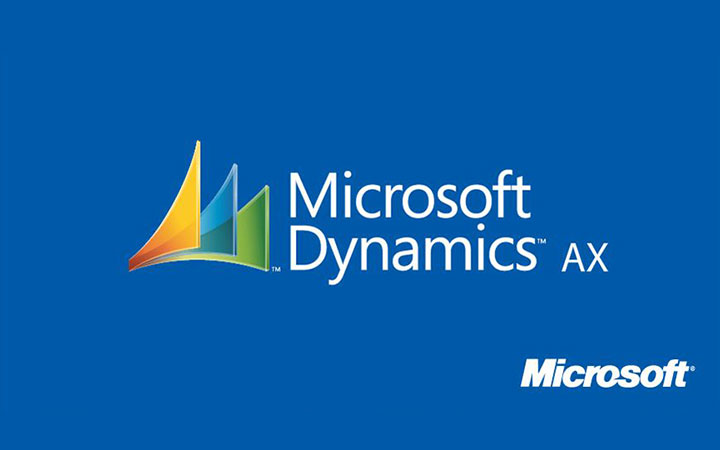
Development III in Microsoft Dynamics AX 2012 培训
课程周期:18小时
使用教材:培训讲义
教材费用:送培训讲义,教学光盘
二、 课程简介
Module 1: X++ Unit Test Framework
This module describes how the X++ Unit Test framework allows for unit tests to be created along with the code they are designed to test.
Lessons
Introduction
Creating Test Cases
Adding Methods to Test Cases
Running Test Cases
Build Test Projects and Suites
Lab : Create a Test Case
After completing this module, students will be able to:
Create a test case.
Add methods to a test case.
Run a test case.
Build a test project and suite.
Isolate test cases appropriately.
Module 2: Working with Data
This chapter explains the correct approach to database functions when processing large amount of data in Microsoft Dynamics AX.
Lessons
Introduction
While Select
Query
Caching
Locking
Temporary Tables
InitFrom
ParmTables
Date Effectiveness
Computed Columns in Views
Data Integration
Lab : Fetching Data
Lab : Converting Queries
Lab : Reducing Locking
Lab : Temporary Tables
Lab : Integrating External Data
After completing this module, students will be able to:
Explain the MorphX development environment and the Application Object Tree
Program optimal database access using a "while select" statement.
Program optimal database access using queries.
Describe the caching mechanisms in Microsoft Dynamics AX.
Prevent and resolve database locking.
Use temporary tables in classes, forms, and reports.
List the reasons for using InitFrom methods.
Use ParmId and ParmTables.
Discuss date effectiveness and describe how to build date effective forms.
Add a computed column to a view.
Employ the various techniques available for integrating external data with Microsoft Dynamics AX.
Module 3: Classes
This lesson introduces some of the most commonly used system classes, and demonstrates ways they can be used to support modifications.
Lessons
Introduction
Collection Classes
Application Object Classes
Application Substituted Kernel Classes
RunBase Framework
Args Object
Lab : Create a Map
Lab : Create a Query from Code
Lab : Create a Global Method
Lab : Make a RunBase Class
Lab : Using Args
After completing this module, students will be able to:
Use collection classes to store data in X++.
List which application objects control different Graphical User Interface (GUI) components.
Modify and use the Application Substituted Kernel Classes.
Extend the RunBase framework to create new batch processes.
Transfer information using the Args object.
Module 4: Forms
This module provides a comprehensive foundation for using forms in Microsoft Dynamics AX 2012 to interact with the end-user.
Lessons
Introduction
Architecture
Data Sources
Form Controls
Form Methods
Placement of Code
Additional Controls
Lab : Create a Form
Lab : Use Unbound Controls
Lab : Initialize a Form
Lab : Add a Window Control
After completing this module, students will be able to:
Identify the main sections that make up a form.
Add data sources to a form to define what data is displayed by the form.
Add controls to a form to display data.
Modify form methods to the control how the form behaves when it opens and closes.
Make decisions about where to place the code.
Make runtime modification of the fetch of data.
Module 5: Visual Studio Integration
This module explains the Visual Studio tools built specifically for Microsoft Dynamics AX development.
Lessons
Introduction
Application Explorer
Visual Studio Projects
Managed Code Projects
Deploying Managed Code
Visual Studio Debugging Experience for X++
Lab : Create a Managed Code Project
Lab : Create an Event Handler in Managed Code
After completing this module, students will be able to:
Explore the Application Object Tree (AOT) from Visual Studio.
Create a project in Visual Studio.
Write .NET managed code that uses X++ objects.
Deploy managed code.
Debug code using Visual Studio.
Module 6: Workflow
This module introduces the development side of creating a workflow. Workflow is a system in Microsoft Dynamics AX 2012 that allows business processes to be automated.
Lessons
Workflow Configuration
Create a Workflow Category
Create a Query
Create a Workflow Type
Enable Workflow on a Form
Create a Workflow Approval
Create Event Handlers
Author a Workflow
Lab : Add another Condition to the Submit Action
Lab : Enable Resubmit
After completing this module, students will be able to:
Configure how the workflow engine is executed on a server.
Specify which application module a workflow is applicable to using a workflow category.
Link tables to workflows using a query.
Create a new workflow type.
Apply a workflow to a form.
Define what happens when the workflow is approved or denied.
Create Event Handlers and apply them to a workflow.
Configure a workflow.
三、 企业团体定制介绍
1、可提供团体定制培训,为企业量身定做。